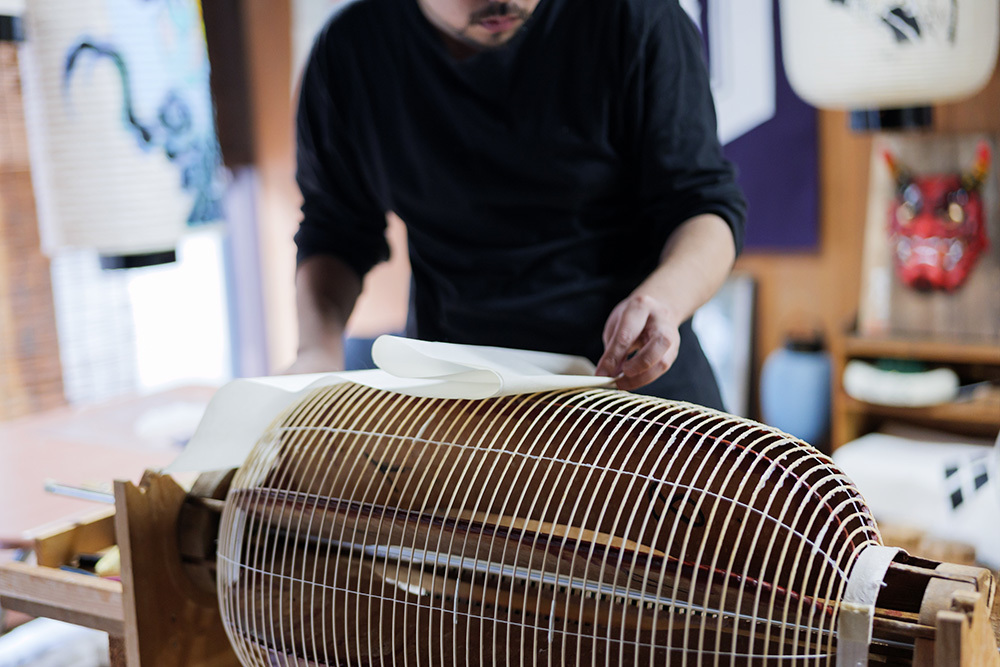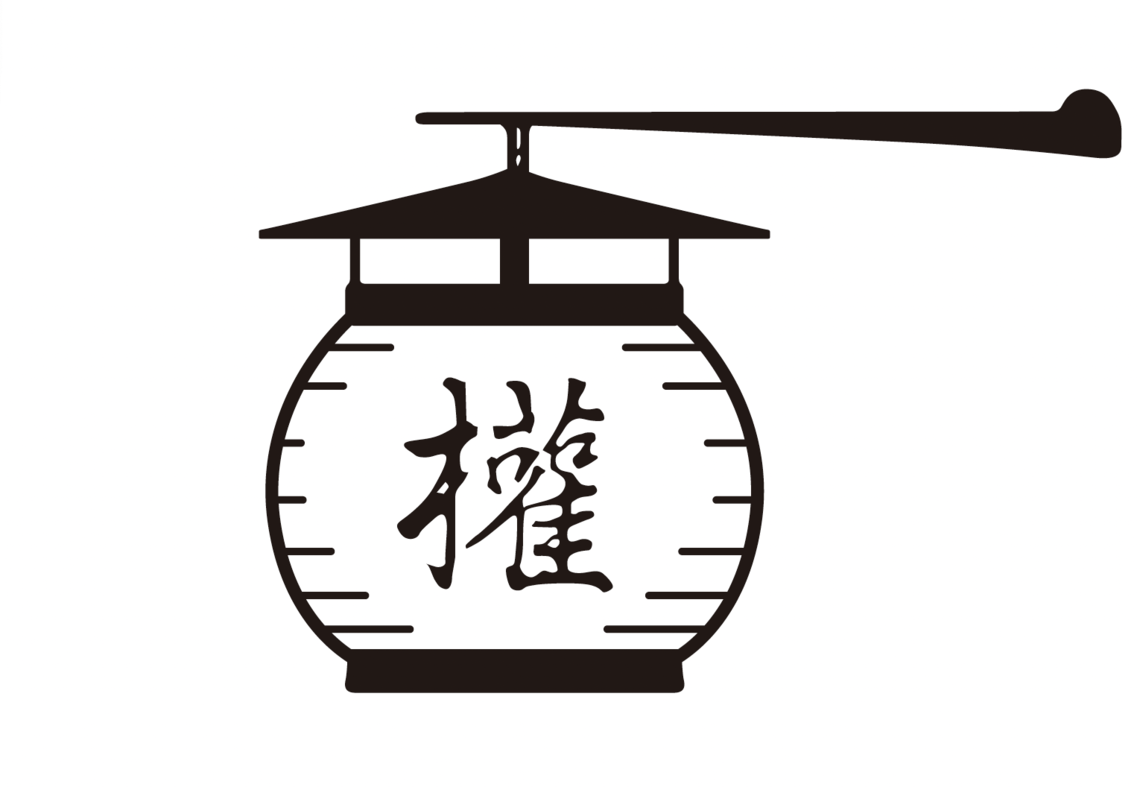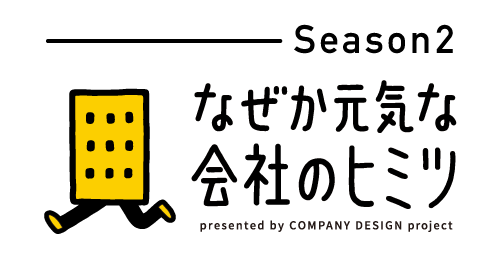Note: This website was automatically translated, so some terms or nuances may not be completely accurate.
The Future of Promotion, Illuminated by Soft Light
This series explores the secrets behind "vibrant companies" with "originality," as uncovered by Dentsu Inc.'s "Company Design" team. In the 41st installment, we hear from Hiroki Ito, the eighth-generation president of Ito Gonjiro Shoten, a lantern manufacturer in Yame City, Fukuoka Prefecture, with over 200 years of history. He shares insights on balancing "tradition" and "innovation."
Written by: Ryo Miura (Dentsu Kyushu Inc.)
My interest in Ito Gonjiro Shoten began with a scene from a TV program I saw years ago. I distinctly remember feeling strangely stirred by the talk of lantern lineage and an exhibition in Paris. Lanterns themselves have a long history, as the common belief that they were introduced during the Muromachi period suggests. But an exhibition of these lanterns in Paris? While searching for subjects for this series, that old feeling of unease suddenly resurfaced.
Meeting President Hiroki Ito, the eighth-generation owner, who I finally got to meet this time, amplified that feeling I had in front of the TV. I hear many traditional Japanese crafts are struggling due to a lack of successors and the decline of raw material industries. Amidst this, President Ito's passion and drive to "illuminate" a wide range of areas, from Japan's charm to entertainment, using lanterns, is truly something to see. I believe it offers valuable insights for any kind of work.

Born in Fukuoka Prefecture in 1990. Studied marketing in university and gained experience in fashion building promotions after graduation. Later, he began full-time lantern craftsmanship as an artisan at "Ito Gonjiro Shoten," a shop with over 200 years of history in Yame City, Fukuoka Prefecture. Currently, as the 8th generation head, he preserves tradition while challenging himself daily with new initiatives.
Lanterns are made for the gods
Gifu, Odawara, Kyoto, and Yame in Fukuoka Prefecture are said to be Japan's four major lantern production areas. "When people say 'Yame lanterns,' they're referring to Bon lanterns. In contrast, what we handle are decorative lanterns (display lanterns) used in shrines, temples, and festivals. Building on that, we are now pursuing the potential of lanterns as devices for various spatial presentations." What does "spatial design" mean? They're just lanterns, right? You know, the ones hanging at beer gardens or izakaya entrances... I think that's a perfectly reasonable reaction from readers. Had I not encountered that particular TV program, I myself would likely have thought the same.

"After all, we're dealing with the gods. There's absolutely no room for cutting corners. In any job, you might slack off a little sometimes, right? But in our work, we can't let our guard down even for a moment." Wow, just hearing that conveys the immense pressure. "We're human, so it's impossible. But we have to keep going. So, what do we do? I'll explain later, but 'you have to keep yourself happy' – that's the only way."
Using light to create atmosphere
What does it mean to create space with lanterns? Is it like stage design? "Actually, our lanterns have been used for overseas stage and film art, but it's not just for fictional worlds. Restaurants, commercial facilities, event venues... Any place that draws people in, any gathering space—I believe our lanterns offer possibilities unique to them."

I see. So that's it. Using the power of stage sets and promotion to create "places" that draw people and "scenes" that captivate them. If that's the case, it makes perfect sense that they've been adopted as sets for famous overseas stage productions and films.
"While it could be seen as an extension of such promotion, one of our current projects involves decorative art for Fukuoka International Airport." Promotion also looks ahead to things like inbound tourism. Shining a light on traditional crafts. Their forms, passed down through generations, illuminated by light, brightening modern spaces... It's starting to feel like a grand scale endeavor.
What kind of company is Craft Cult?
President Ito inherited a family business over 200 years old, but his previous role was managing in-store presentations at a major commercial facility. In other words, he's a specialist at the cutting edge of promotion. "Back in my student days, I didn't exactly jump on the student startup bandwagon, but I did take a proposal to that company thinking, 'Let's get them to hire us!' and they accepted it. Whether it was because of that connection or not, they took me on as an employee."
A student's proposal getting hired by a major corporation? Even for that cutting-edge company, it was unprecedented. "Since childhood, I've been good at reading people's expressions—what we'd now call 'reading the room.' Before I knew it, I was on good terms with everyone around me, from the bottom to the top." He says it casually, but being loved by people across generations... that's an incredible skill—or perhaps it's better called charisma. Should one be conservative or innovative? Normally, people lean one way or the other.
The fact that he started a company called "Craft Cult" alongside "Ito Gonjiro Shoten" also hints at this characteristic of President Ito. "To put it simply, imagine there's a yakitori restaurant. If Ito Gonjiro Shoten handles the signboard, then Craft Cult handles the interior design. It's a venture company meaning 'craft (craftsmanship) cult (devotion)'. If established businesses are the strongest shield, solid and defensive, then ventures are the perfect spear for attacking new fields. To truly practice 'selling experiences, not just products', I believe you need both items: the shield and the spear."

You're responsible for your own mood
During my pre-interview research, President Ito had commented along the lines of "It's important not to try to create trends when making things." When I brought this up, President Ito stated, "I believe tradition is for making money, whereas trends don't make money." Isn't it usually the opposite? Tradition doesn't make money, but it must be preserved. To do that, you have to chase trends (trends) to make money, right? President Ito's perspective is the complete opposite.
President Ito also said this: "When I decided to take over the company, I thought my existence was like a 'blink of an eye'." Certainly, for a company over 200 years old, any president might feel like a blink of an eye. But again, from a conventional perspective (though this is purely speculative), wouldn't the feeling be more like, "Alright, this company is mine, the one in its Xth generation! I'm going to stay put as long as I possibly can!"?
"For the company, I'm like a human sacrifice, a being consumed as sustenance. That's precisely why I think it's important to enjoy myself, to entertain myself. It's what I mentioned at the beginning: 'I take care of my own mood.' For me, 'trend' means 'the state of taking care of my own mood.'" Ah, I get it. President Ito's "trend" is his "personal obsession." To preserve the tradition that earns him money, he enjoys himself by indulging in his personal obsession. What a sophisticated way of thinking, I thought.

The light of lanterns captivates the world
Lantern light has this soft, diffused quality, right? That "softness" is somehow comforting to Japanese people, or rather, it soothes the heart... What do you think that's about? I asked President Ito.
I thought I'd asked a difficult question, but President Ito immediately replied: "Unlike the direct, linear light of Western candles, Japanese light becomes soft by passing through something. Its shape and color aren't too strong; it's hazy and faint. I think this reflects a uniquely Japanese sensibility – finding virtue, affection, and dignity in things that are unclear or whose existence isn't fixed."
Dim and faint, huh. Compared to my own expression "softly glowing," it's clear we perceive light on different levels. "Take ukiyo-e prints, for example—they feature a lot of negative space. And the reception rooms at the Imperial Palace for state guests are deliberately sparse and open." You understand, right? President Ito's smile seemed to say just that. In his expression, one could sense a proud confidence: "The light of the lantern embodies the Japanese beauty that captivates the world."


Ito Gonjiro Shoten's website is here.

The Craft Cult website is here.

This series explores the secrets of "vibrant companies" possessing "originality," investigated by Dentsu Inc.'s "Company Design" team. In the 41st installment, we introduced Ito Gonjiro Shoten, a lantern manufacturer in Yame City, Fukuoka Prefecture, and Craft Cult, a company gaining global attention for its space production using these lanterns.
The Season 1 series can be found here.
The "Company Design" project site is here.
[Editor's Note]
The defining feature of Yame lanterns lies in the "single-spiral method" used to construct their frames: thin, long bamboo strips are spiraled into shape. Crucial to this process is the "play" between the strips. If the gaps are too tight, flexible shaping becomes impossible. Conversely, if the gaps are too wide, the structure itself cannot hold. When I asked President Ito about the importance of this "play," he offered a comment from an unexpected angle. "This might not directly answer your question, but believe it or not, I have a bad personality. For example, if someone brags about being the nth generation of a long-established shop, I'll ask them, 'Can you say you're the strongest of all the generations in that shop?'"
Taking "I have a bad personality" at face value, it seems like a superficial anecdote about someone who can't help saying spiteful things... But wait. Couldn't the true meaning behind President Ito's words be, "At least, that's what I'm aiming for"? Ah, so "play = rebellious spirit," right? When I responded with that, President Ito simply answered, "That's right." To me, that "Yes" sounded like it carried a resolve: to respect tradition, yet never rest on its laurels.
Was this article helpful?
Newsletter registration is here
We select and publish important news every day
For inquiries about this article
Back Numbers
Author

Miura Ryo
Dentsu Kyushu Inc.
Integrated Growth Planning Bureau Growth Planning Department
Chief Planner
Field Promotion and PR are our core areas, where we tackle diverse challenges for corporations and local governments. Key projects include the Kyushu Shinkansen campaigns "Celebrate! Kyushu" and "Dream Come True Shinkansen," Tsuruyama Department Store's "Stories of People and Things" exhibition, and the "Attack on Titan" exhibition.




